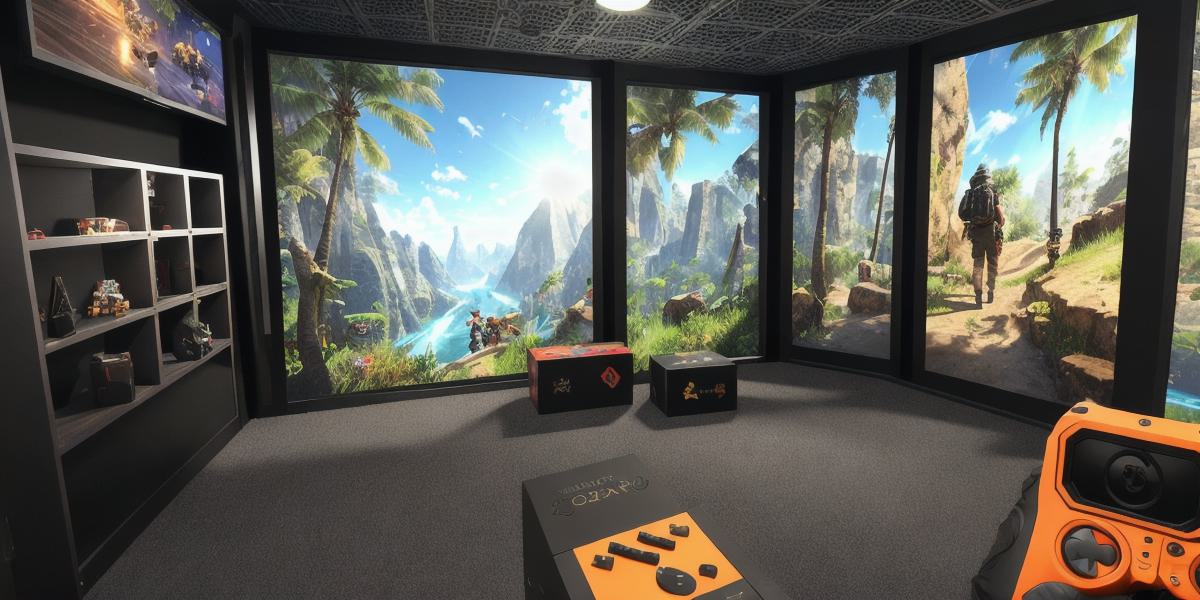Virtual reality (VR) has revolutionized the way we experience and interact with digital environments. One of the most exciting applications of VR technology is in escape rooms, where players are fully immersed in a virtual world and must work together to solve puzzles and escape before time runs out. In this article, we will explore the thrilling world of VR escape rooms and how they can be used for simulated reality development.
VR Escape Rooms: A Growing Popularity
Virtual reality escape rooms have become increasingly popular in recent years. These immersive experiences offer players a chance to interact with virtual environments in a way that was previously impossible. By using VR technology, escape rooms can create incredibly realistic and engaging experiences that transport players into fully immersed worlds.
One of the reasons for the growing popularity of VR escape rooms is the fact that they offer an incredibly unique and exciting experience. Unlike traditional escape rooms, which are usually played in real-life environments, VR escape rooms allow players to experience a fully immersive virtual world. This means that players can be transported into any environment they desire, from ancient Egypt to outer space, and must use their problem-solving skills to navigate through the virtual world and complete the game.
The Benefits of Virtual Reality Escape Rooms for Simulated Reality Development
Virtual reality escape rooms offer a number of benefits for simulated reality development. One of the most significant is the fact that they allow developers to create highly engaging and immersive experiences that can be used to train employees, simulate real-world scenarios, and even provide entertainment.
One of the key benefits of VR escape rooms for simulated reality development is their ability to create highly realistic simulations of real-world environments. By using VR technology, developers can create incredibly detailed and accurate representations of real-world environments, which can be used for training employees or simulating real-world scenarios. For example, a medical school could use a VR escape room to train students on how to perform complex surgeries in a safe and controlled environment.
Another benefit of VR escape rooms for simulated reality development is their ability to provide an engaging and interactive experience. By using puzzles, challenges, and other interactive elements, developers can create experiences that are both fun and educational. This means that employees can learn new skills while also having a good time, which can lead to increased motivation and better performance.
Real-Life Examples of VR Escape Rooms in Action
There are many real-life examples of VR escape rooms being used for simulated reality development. One such example is the use of VR escape rooms for training employees in the hospitality industry. For example, a hotel chain might use a VR escape room to train staff on how to handle difficult guests or navigate through complex situations. This allows employees to practice their skills in a safe and controlled environment, which can lead to better performance and improved customer satisfaction.
Another real-life example of VR escape rooms being used for simulated reality development is the use of VR escape rooms for military training. For example, the US Army has used VR escape rooms to train soldiers on how to navigate through complex environments and complete missions. This allows soldiers to practice their skills in a safe and controlled environment, which can lead to better performance and improved readiness for real-world scenarios.
Conclusion
Virtual reality escape rooms are an exciting and growing application of VR technology. By using VR technology to create highly immersive virtual environments, developers can create engaging and interactive experiences that can be used for simulated reality development. From training employees to simulating real-world scenarios, VR escape rooms offer a unique and exciting way to develop simulated reality experiences.
